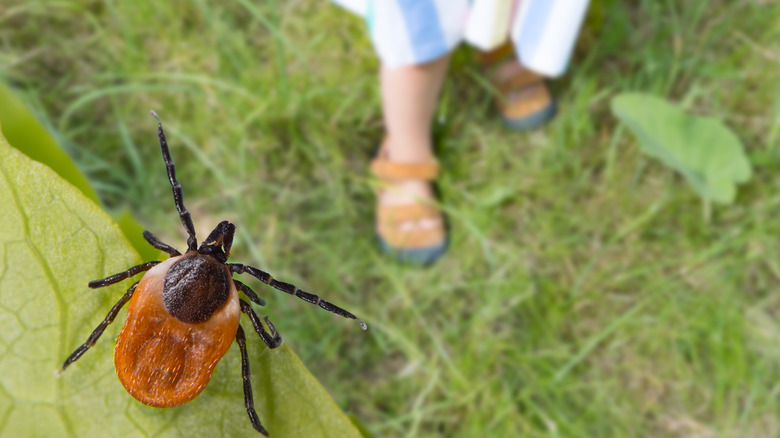How To Keep Ticks Out Of Your House
Due to their size and ability to find and latch onto unsuspecting hosts, ticks oftentimes find themselves as uninvited guests in our homes. The most common way that ticks make their way indoors is by latching onto people and pets. And, if a female tick ready to lay eggs happens to hitch a ride into your home, one tick can quickly turn into an infestation. This is undeniably a major issue that homeowners must identify and address as soon as possible in order to avoid any potential health issues caused by tick-borne diseases.
While sucking the blood out of people and pets to gain nutrients, ticks can transmit potentially life-threatening diseases to their hosts. The most common tick-borne diseases in the United States include Lyme disease, babesiosis, ehrlichiosis, Rocky Mountain Spotted Fever, anaplasmosis, Southern Tick-Associated Rash Illness, Tick-Borne Relapsing Fever, and tularemia.
Fortunately, there are multiple ways to prevent these tick infestations before they have a chance to begin. Unlike other unwanted pests like ants, spiders, and even mice, ticks don't wander into homes on their own, making early detection and elimination highly attainable.
Checking for ticks
Regularly check yourself, your clothing, and your pets before coming inside to ensure that no parasites are coming with you. To check yourself or another person, take extra caution when inspecting extremities, the head (especially behind the ears), the waist, and any other exposed skin. Ticks don't have the ability to fly, so they typically attach to the lower body and work their way up.
For animals like dogs that spend a lot of time outside rolling and laying in the grass, it's possible for ticks to latch anywhere on the body. However, the tail, legs, and head are the most important spots to check. Using tick repellent while in wooded areas or other outdoor spaces where ticks are prominent is another great way to protect yourself and your pets. Consider investing in a flea and tick deterrent collar for pets often joining you in these higher-risk areas. All pets should also receive routine tick medication, which releases a chemical that makes the animal's blood poisonous to fleas and ticks, killing them if they latch onto the skin.
Keeping a clean yard
Keeping a well-manicured yard also plays a huge factor in the number of ticks your family and furry friends may come into contact with. For instance, ticks like to hide out in dense vegetation, which is nonexistent with a well-kept lawn and minimal plant overgrowth. It's also a good idea to invest in a reliable fence for your property to keep out wild animals, which are often vehicles for ticks.
Any ticks found should be carefully removed with either tweezers or by hand. If they are already latched onto the skin, be sure to remove the entire parasite, including the head. After you remove a tick, flush it down the toilet or, since ticks have a heat tolerance, burn it to permanently evict it from your home. As for nests, ticks often lay eggs in cushioned areas like carpeting and pet beds. The heat threshold also plays a factor here because you can use a steamer to destroy eggs and ticks in carpets, and hot water should clean any infested bedding.


